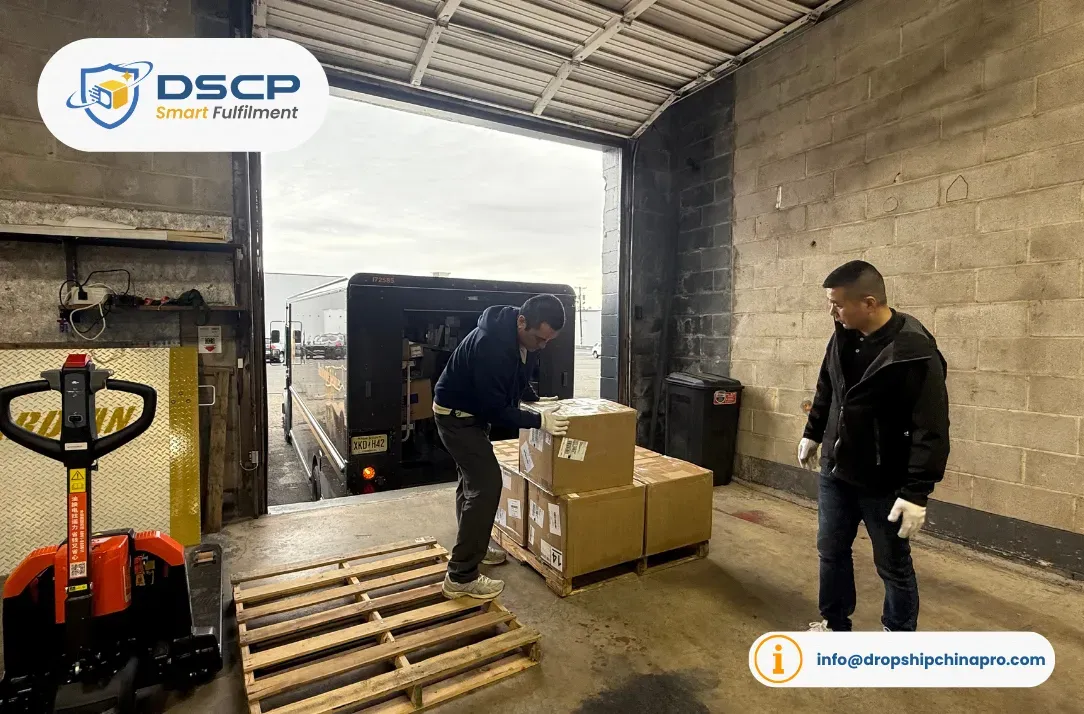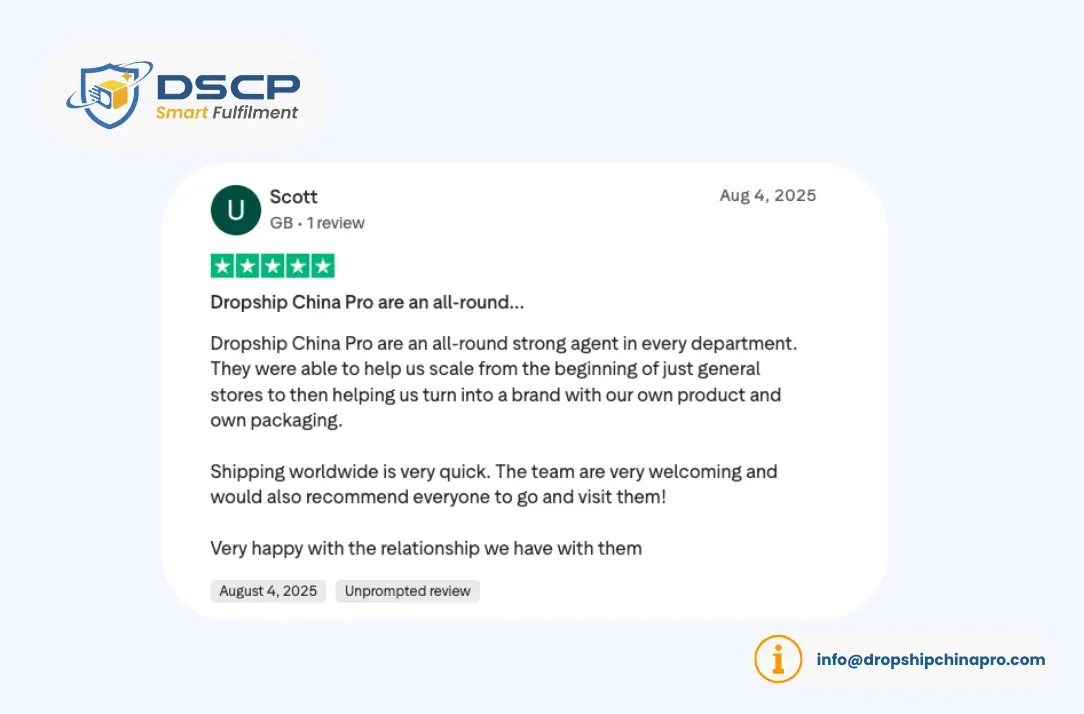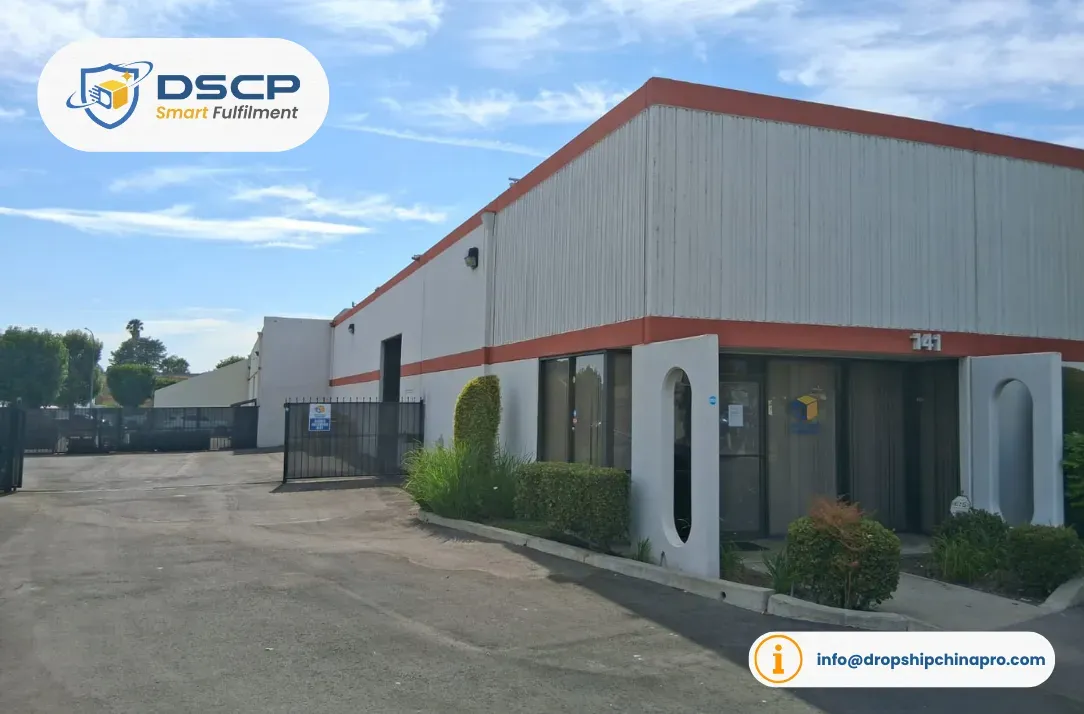Your shipping costs are climbing. Customers complain about slow deliveries. Inventory sits thousands of miles from your buyers, draining cash while orders pile up. Sound familiar? The warehouse location you choose determines whether your ecommerce business thrives or struggles with logistics nightmares. It affects delivery speed, shipping costs, and ultimately, customer satisfaction. For online sellers, this single decision shapes your entire fulfillment strategy.
The United States offers three primary fulfillment zones: West Coast, Central, and East Coast. Each location brings distinct advantages and trade-offs. This guide breaks down the logistics landscape so you can make the right choice for your business.

Key Takeaways for Choosing the Best Warehouse Location
- Geography drives costs: Warehouse location directly impacts shipping expenses and delivery times across your customer base.
- West Coast advantage: Fastest inventory restocking from Asia, with major ports handling 45% of US container imports (Port of Los Angeles, 2024).
- Central positioning: Reduces zone-based shipping fees by positioning inventory roughly equidistant from both coasts.
- East Coast proximity: Places inventory closest to the largest customer concentration, with 40% of the US population within two-day ground shipping.
- Multi-location strategy: Growing businesses often benefit from a dual-warehouse approach, combining inbound efficiency with outbound speed.
Why Warehouse Location Matters for Ecommerce
Your warehouse location affects three critical business factors: shipping costs, delivery speed, and inventory flexibility.
Shipping expenses increase dramatically with distance. Ground shipping to the opposite coast can cost 2-3 times more than regional delivery. When you’re processing hundreds or thousands of orders monthly, these differences compound quickly. In our experience managing over 30,000 parcels daily, businesses reduce shipping costs by 15-25% simply through strategic warehouse placement (Shopify, 2024).
Delivery speed has become a competitive requirement, not a luxury. Amazon trained customers to expect fast shipping, and now 73% of online shoppers consider delivery speed a primary purchase factor (National Retail Federation, 2024). Your warehouse location determines whether you can meet these expectations affordably. Further reading for a detailed guide for US Fulfillment Warehouse.
Inventory flexibility depends heavily on how quickly you can restock. For businesses importing from Asia, West Coast locations cut 5-7 days from the supply chain compared to East Coast warehouses. This speed allows you to hold less safety stock, freeing up working capital for growth investments. With West Coast ports handling 45% of US container imports, the proximity advantage becomes clear (Port of Los Angeles, 2024). Further reading for E-commerce Fulfillment.
Warehouse Location Comparison at a Glance
| Location | Best For |
|---|---|
| West Coast | Asia imports, inventory flexibility |
| Central US | Nationwide coverage, balanced costs |
| East Coast | Fast delivery to 40% of US population |
| Multi-Location | High-volume brands (1,000+ orders/month) |
West Coast Warehouse Location: Import Speed and Flexibility
West Coast fulfillment centers offer the fastest path from Asian manufacturing to American customers. Los Angeles, Long Beach, and Oakland ports handle 45% of US container imports, making them the logical first entry point for inventory (Port of Los Angeles, 2024).
Why the West Coast Works
The primary advantage is restocking speed. Products arriving at Los Angeles ports can reach warehouses the same day or next day, compared to a week-long cross-country truck journey to East Coast facilities. This rapid turnaround enables lean inventory practices and quick response to demand shifts.
Processing inventory directly from nearby ports reduces the time products spend in transit and lowers the capital tied up in moving inventory. We’ve seen businesses cut their cash conversion cycle by 7-10 days simply by switching from East Coast to West Coast receiving.
California and Nevada fulfillment operations benefit from extensive carrier networks. Major shipping companies maintain robust West Coast infrastructure, providing competitive rates and reliable service nationwide. The trade-off is that East Coast deliveries take 5-7 days via ground shipping and cost 40-60% more than regional shipments.
With streamlined pick and pack services and same-day receiving from ports, ecommerce businesses utilize the West Coast warehouse.
Best Fit for West Coast Warehousing
West Coast warehouses work best for:
- Businesses sourcing primarily from China or other Asian countries
- Startups and growing brands, prioritizing inventory flexibility
- Companies with customer bases concentrated in Western states
- Sellers who value quick restocking over fastest delivery to all regions
Central US Warehouse Location: Balanced National Coverage
Central warehouse locations provide middle-ground solutions for businesses serving customers nationwide. Positioned roughly halfway between coasts, these facilities minimize the maximum distance to any US destination.
The Central Advantage
Zone-based shipping costs decrease when your warehouse sits centrally. Ground shipping carriers charge based on distance zones, and central locations reduce the average zone level across your customer base. This positioning translates to more predictable, moderate shipping costs regardless of where customers live.
Midwest fulfillment centers reach both coasts within 2-3 days via ground shipping, offering reasonable speed at lower costs than express services. For businesses without heavy coastal concentration, this balanced approach optimizes total shipping expenses.
However, central locations face challenges. Weather events, including snowstorms and tornadoes, can disrupt operations seasonally. Peak holiday periods may bring congestion at central hubs handling nationwide traffic.
Central Location Considerations
Another factor: if your inventory originates overseas, it still lands on a coast first. Products must then travel inland to your central warehouse, adding several days and trucking costs before you can start fulfilling orders. This extended inbound journey partially offsets the outbound shipping advantages.
Central warehouses suit businesses with:
- Broad, nationwide customer distribution without heavy coastal concentration
- Growth-stage operations, not ready for multi-location complexity
- Priority on cost efficiency over maximum delivery speed
- Domestic sourcing or willingness to absorb inbound transportation time

East Coast Warehouse Location: Close to Your Customers
East Coast fulfillment centers position inventory nearest to the largest customer concentration. With 40% of the US population living within two-day ground shipping of East Coast warehouses, this location enables fast, affordable delivery to a massive customer base.
East Coast Benefits
The primary advantage is delivery speed to the eastern half of the country. Major metropolitan areas from Boston to Miami contain millions of online shoppers, and proximity enables 1-3 day ground delivery at costs 30-50% lower than express shipping from distant warehouses.
New Jersey facilities serve the densely populated Northeast corridor effectively, with next-day ground delivery reaching New York, Philadelphia, Boston, and Washington, DC. The positioning also provides a reasonable 2-3 day reach to Southeast markets from Atlanta to Florida.
Proximity improves delivery reliability in congested urban areas. Shorter distances mean fewer potential failure points in the delivery chain, particularly important in complex metro regions where fulfillment performance differentiates successful brands. Our data shows East Coast warehouses maintain 99%+ on-time performance to Northeast addresses compared to 94-96% for cross-country shipments.
East Coast Trade-offs
The disadvantages center on cost and supply chain complexity. Labor and facility costs run higher on the East Coast compared to other regions. If your products arrive through West Coast ports, they face a week-long cross-country journey before reaching your warehouse, delaying initial availability by 5-7 days.
These factors make East Coast-only strategies challenging for new businesses or those without established multi-location operations. The model works best when paired with West Coast fulfillment, balancing inbound efficiency with outbound speed.
East Coast warehouses fit:
- Established businesses with confirmed East Coast customer concentration
- Brands ready to implement multi-warehouse inventory strategies
- Companies prioritizing delivery speed to the Northeast and Southeast
- Operations with inventory volumes justifying the higher costs
Delivery Time by Warehouse Location
| From Location | Average Delivery Time |
|---|---|
| West Coast (Regional) | 1-3 days ground shipping |
| West Coast to East Coast | 5-7 days ground shipping |
| East Coast (Regional) | 1-3 days ground shipping |
| Central US (Nationwide) | 2-4 days ground shipping |
Multi-Warehouse Strategy: Combining Location Advantages
Growing ecommerce businesses often graduate from single-location fulfillment to multi-warehouse strategies. This approach positions inventory across strategic locations, optimizing both inbound supply chain efficiency and outbound delivery performance.
When to Expand Locations
Consider adding a second warehouse location when:
- Monthly order volume exceeds 1,000-2,000 units consistently
- Customer data shows significant concentration in multiple regions
- Shipping costs and delivery times measurably affect conversion rates
- Business model supports inventory investment across locations
The typical expansion path starts with West Coast fulfillment for import efficiency, then adds East Coast capacity to serve that customer base faster. This dual-location approach captures 80%+ of US customers within two-day ground shipping while maintaining quick restocking from Asian suppliers.
When to Expand Warehouse Locations
| Order Volume | Recommended Strategy |
|---|---|
| Under 500 orders/month | Single West Coast warehouse |
| 500-1,000 orders/month | Evaluate customer geography |
| 1,000-2,000 orders/month | Consider dual-location strategy |
| Over 2,000 orders/month | Multi-warehouse recommended |
Inventory Allocation Strategy
Smart multi-warehouse operations split inventory strategically. Fast-moving products are stocked at both locations for quick delivery anywhere. Slower-moving items concentrate at one location to avoid splitting small quantities and creating stockout risk.
Our data across 1,500+ active stores shows businesses implementing multi-warehouse strategies reduce average delivery times by 30% while cutting shipping costs by 15-20% despite operating two facilities. The key is intelligent inventory positioning based on actual demand patterns, not guesswork.
Shipping Cost Impact by Location
| Route | Cost Difference |
|---|---|
| West Coast to West Coast | Baseline cost |
| West Coast to East Coast | 40-60% higher |
| East Coast to Northeast | 30-50% lower than express |
| Multi-Warehouse Strategy | 15-20% average savings |
How to Choose Your Warehouse Location
Selecting the optimal warehouse location requires analyzing your specific business factors. Start by examining where your customers actually live. Sales data from your ecommerce platform shows geographic distribution, revealing whether you need a coastal focus or nationwide coverage.
Decision Framework
Ask these questions:
- Where does your inventory originate? If importing from Asia, West Coast locations provide faster restocking and lower inbound costs. Domestic sourcing offers more location flexibility.
- Where do your customers concentrate? Customer zip code data reveals whether you need proximity to specific regions or balanced national coverage.
- What delivery speeds do customers expect? Premium brands often require faster shipping, potentially justifying higher-cost East Coast locations or multi-warehouse strategies.
- What’s your current order volume? Smaller operations (under 500 orders monthly) typically start with single locations. Higher volumes support multi-warehouse complexity.
- What’s your budget for fulfillment? Consider both obvious fees and hidden costs, including inbound freight, inventory holding, and operational overhead.

Real-World Example: From Dropshipping to Brand
Scott started as a typical dropshipper running general stores with products shipping directly from China. Delivery times of 12-18 days created constant customer service headaches, and his conversion rates suffered as competitors offered faster shipping.
After building a consistent volume of 600-800 orders monthly, Scott made a strategic shift. He moved his best-selling products into our Los Angeles warehouse, cutting delivery times to 2-4 days for his primarily US customer base. The impact was immediate: conversion rates improved by 18%, customer complaints dropped by 65%, and repeat purchase rates nearly doubled.
But the warehouse location decision did more than improve metrics. It enabled Scott to build an actual brand. With inventory sitting in LA, he could implement custom packaging, run quality control checks, and respond quickly to demand changes. As Scott describes it: “They were able to help us scale from the beginning of just general stores to then helping us turn into a brand with our own product and own packaging.”
The West Coast warehouse location proved so valuable that Scott and his partner Harry actually flew to visit the facility in person, understanding that their warehouse partner was now central to their business success. Their monthly revenue grew from five figures to six figures within eight months of the warehouse transition.
This progression from direct-from-China dropshipping to US warehouse fulfillment to branded products represents a path many successful ecommerce businesses follow. The warehouse location decision isn’t just about logistics; it’s about what business model you can support.
This hybrid fulfillment model combining China sourcing with US warehouses enabled Scott to build trust for his brand.
FAQs for the Best Warehouse Location
What is the best warehouse location for ecommerce?
The best warehouse location depends on your specific business needs. West Coast locations work well for businesses importing from Asia and prioritizing inventory flexibility. Central locations suit nationwide customer bases without heavy coastal concentration. East Coast warehouses serve businesses with customers concentrated in eastern states. Many growing businesses use multiple locations to balance these factors.
How does warehouse location affect shipping costs?
Warehouse location significantly impacts shipping costs through zone-based pricing. Carriers charge more for longer distances, so warehouses far from customers cost more to ship from. Strategic positioning can reduce shipping expenses by 15-25% compared to poorly located fulfillment operations.
When should I use multiple warehouse locations?
Consider multiple warehouse locations when monthly order volume exceeds 1,000-2,000 units consistently, and customer data shows significant geographic concentration in different regions. Multi-location strategies work best for businesses that can manage inventory allocation complexity and justify the operational overhead.
Should I choose East Coast or West Coast fulfillment?
Choose based on your supply chain and customers. West Coast fulfillment works better for Asia-sourced products and quick restocking needs. East Coast locations serve businesses with customer concentration in eastern states. Many successful operations use both, starting with the West Coast for imports, then adding the East Coast for customer proximity.
How much does warehouse location affect delivery speed?
Warehouse location can change delivery times by 3-7 days for ground shipping. West Coast to East Coast ground shipping typically takes 5-7 days, while regional shipments deliver in 1-3 days. A strategic location can reduce average delivery times by 30% or more.

Building Your Fulfillment Strategy
Your warehouse location shapes fulfillment performance, costs, and growth potential. After managing fulfillment for over 1,500 active stores, we’ve seen which strategies work and which create unnecessary complexity. Single-location operations work well under 1,000 monthly orders. Beyond that threshold, customer geography starts dictating whether multi-warehouse distribution makes financial sense.
Starting businesses often benefit from West Coast warehouses offering fast restocking and operational flexibility. As you grow and customer patterns become clear, expanding to serve key markets makes strategic sense. DSCP Smart Fulfillment operates strategically positioned US warehouses in California and New Jersey, supporting both single-location and multi-warehouse strategies that combine China sourcing efficiency with domestic delivery speed.
Smart warehouse location decisions compound over time, improving margins and customer satisfaction while supporting sustainable growth. Ready to optimize your fulfillment strategy? We can analyze your business requirements and recommend the warehouse location approach that makes sense for your specific situation. Contact us to discuss your fulfillment challenges and opportunities.
References
- National Retail Federation. (2024). Consumer View: The State of Retail & Ecommerce.
- Port of Los Angeles. (2024). Facts and Figures: Trade Statistics. Retrieved from portoflosangeles.org
- Shopify. (2024). The Complete Guide to Ecommerce Fulfillment. Retrieved from shopify.com

Hi, I’m Yavuz. I help e-commerce businesses grow through strategic content and SEO. Here, I share insights on fulfillment solutions, 3PL partnerships, and digital marketing strategies based on real data and industry trends.





